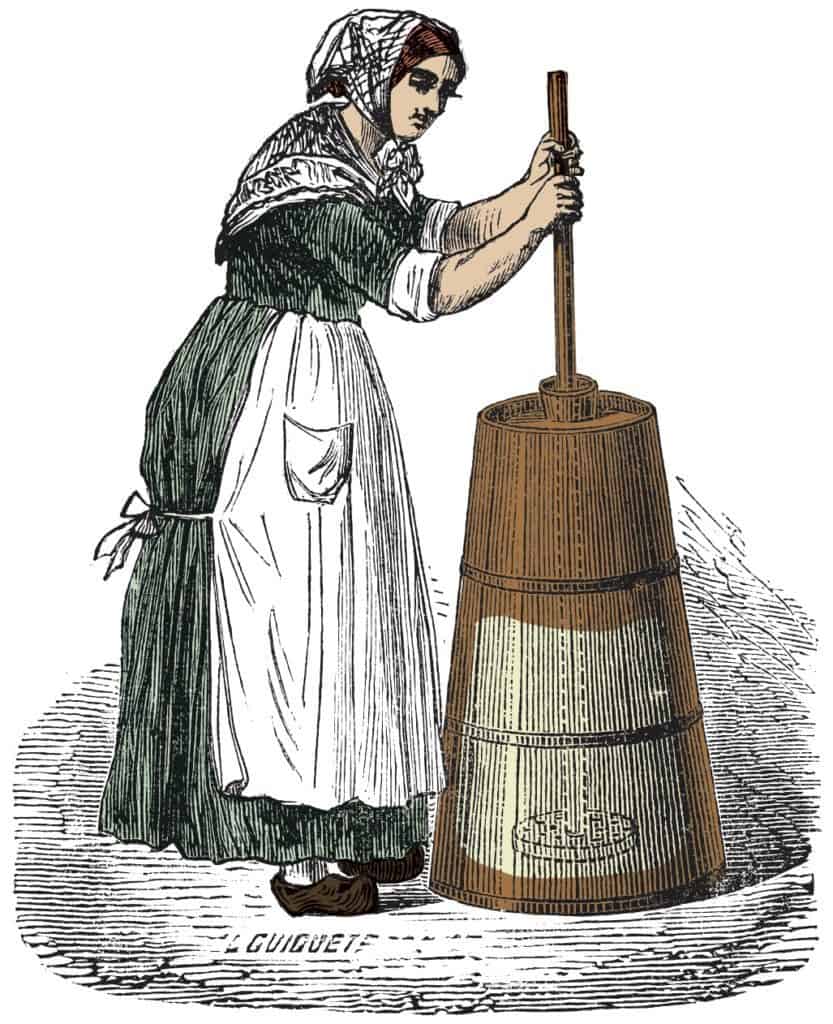Most recipes simply call for a stick of butter or a few large eggs, but once you get to the grocery store, you’re often faced with further decisions. Sweet cream or cultured butter? Organic or free-range eggs? Heavy cream or whipping cream? Read on to find the answers.
Better Butter
There’s a lot of variety on the butter shelf these days—here’s the lowdown
There are two main types of butter: Sweet Cream and Cultured. The former, made from fresh heavy cream, is the most common style in American supermarkets and is sold salted or unsalted. The latter, a beloved European style, is made with cream that has been lightly soured or dosed with live bacteria cultures before being churned. Expect a noticeable tang, plus a slight nuttiness.
Butterfat
The percentage of fat in milk compared to water—is what really divides American-style and European-style butters. Sweet cream butter hovers around 80 percent butterfat, while European butters are a little richer, with 82 to 86 percent. So, if you’re baking, be warned: That extra fat can change the structure of a recipe meant for standard sticks. If you’re set on substituting, play it safe and make a trial run well before party time.
To Salt or Not to Salt?
Unless a recipe explicitly calls for salted butter, opt for unsalted sticks. Being able to add as much or as little salt as you want means you can tweak your meal to different palates or dietary needs. Plus, saltiness can vary by brand, so your results might be unexpected if the store is sold out of your standby.

Put an Egg in It
Gone are the days of choosing eggs based only on size—here’s a breakdown of all the buzzwords
Cage-Free hens live in spaces where they have room to walk, spread their wings, and lay eggs in nests; though a step up from battery cages, the chickens are still confined to barns.
Free-Range hens have access to the outdoors and about two square feet per hen—but the designation doesn’t specify the quality of outdoor space or the amount of time chickens must spend there.
Pasture-Raised hens have at least 108 square feet per bird and feed on grass and insects while on pasture.
Organic eggs, according to the USDA, come from hens that can roam free, with access to the outdoors, and eat feed that doesn’t contain pesticides or fertilizer.
TIP: If these designations matter to you, look for certifications that come from a third party instead of the egg producer alone. That way, you’re guaranteed producers have met a specific set of standards.
Cream 101
With these pointers, you’ll know which pint to pick
Heavy Cream and Whipping Cream
30–36 percent fat
A full-bodied fat content means these two are fairly interchangeable (though heavy cream is a little richer). Use either for—you guessed it—whipped cream to top pies and cakes, or stir them into sauces and soups (the higher fat content makes them less likely to curdle).
Light Cream
19 percent fat
While it’s too low in fat to whip, light cream is perfect for post-party breakfasts: Drizzle it over fruit or granola, pour into coffee, or whisk with eggs for the perfect soft scramble.
Half-and-Half
12 percent fat
This 50-50 mix of milk and cream can easily form a skin when cooked, so save it for chilled uses—after all, no dessert spread is complete without a cup of coffee or tea.
Overwhipped your cream? If you’ve been whisking for a while and the dairy in your bowl has turned chunky and yellow, it’s time to start again with a new pint. But don’t toss the thick stuff—continue whipping until the solids and liquids separate; then strain, form the remaining solids into a ball, and refrigerate. You’ve just made butter.




